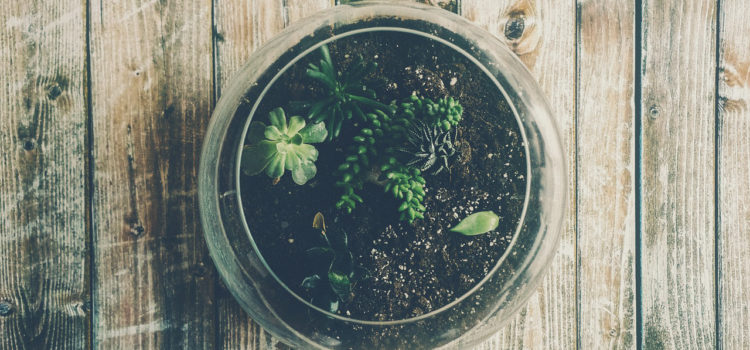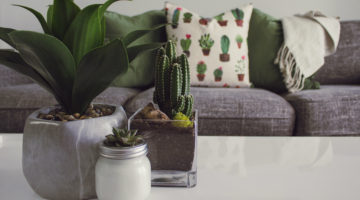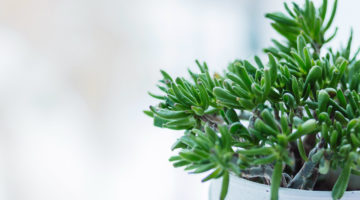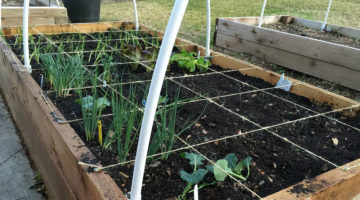Terrariums are big in the gardening community right now, because not only they are beautiful, but interesting to look at as well. The plants inside the terrarium create small, fascinating habitats. It is like a small garden created in a single container. Unfortunately, many people think that it is hard to make and take care of terrariums, so they don’t even consider them an option. But in reality you won’t need any special gardening skills or knowledge to be successful at growing your own terrarium. And to make your first terrarium experience even more simple, here is a brief guide to creating and maintaining your own terrarium.
1. Prepare the container
Basically any glass bowl, dish or jar of decent size can be used as a container for a terrarium. However, know that the type of the container will affect your choice of plants. For example, closed container will hold more humidity inside, therefore it will create a more tropical environment and will be more suited for tropical jungle plants such as ferns, moss and aquarium plants. Open containers will be perfect for all kinds of succulents and cacti, which don’t require much water and nutrients. As for the look of the terrarium containers, smooth, transparent glass containers will be best for terrariums, because they will make sure that the plants get enough light and that you can see the beautiful arrangement of plants, too. So if you choose a simple jar as your container, remove all the labels and other things that might block the light, and you are good to go.
2. Choose the plants
The choice of plants mainly depends on what container you are using. But there are also other factors that influence what plants you should put in your terrarium. For example, you should definitely take into account the placement of your terrarium. If you put it on the window sill, it will receive a lot of light, so you can definitely grow light-lowing plants in the terrarium. However, if you put it on a shelf or in any other space that doesn’t get as much light, you should choose plants that don’t mind a lack of direct sunlight. Generally speaking, pick plants that can tolerate humidity, low light levels or indirect light and are small enough for terrarium. The most common terrarium plants are violets, succulents, smaller tropical plants, moss, baby tears and creeping figs.
3. Soak the planting medium
The base of a terrarium set up should be coir. It is very loose, airy material that holds water without getting soggy. 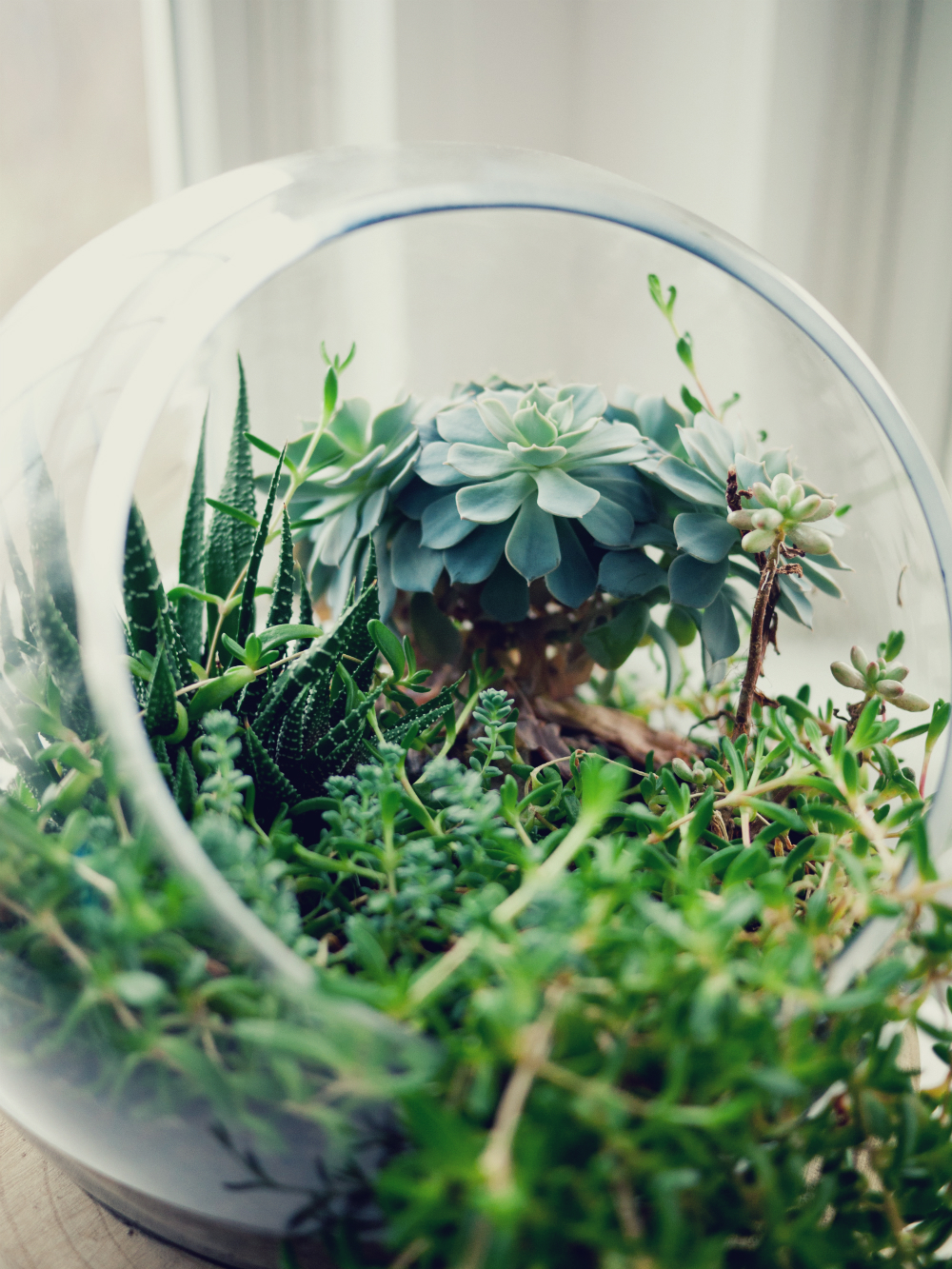 It has neutral pH levels, so it is perfect for closed environments. But before putting it inside your terrarium, you should soak it in warm water for about half an hour, so it becomes soil-like and you are able to plant your plants in it. How to do it? Just put the coir brick in a bowl of water and wait until it expands. Then take it our of the water and you have yourself a terrarium-ready growing medium.
It has neutral pH levels, so it is perfect for closed environments. But before putting it inside your terrarium, you should soak it in warm water for about half an hour, so it becomes soil-like and you are able to plant your plants in it. How to do it? Just put the coir brick in a bowl of water and wait until it expands. Then take it our of the water and you have yourself a terrarium-ready growing medium.
4. Put the soil into the container
A general rule of making a terrarium is that you should add the growing medium in layers, because this will provide better water drainage. First put in an inch of gravel on the very bottom of your terrarium container, but leave the middle blank. If gravel isn’t available to you, you can also substitute for some small stones, just avoid materials that could change the pH level of the soil such as shells. Then put down a sheet of fiberglass to separate the gravel from the growing medium. And then add the soaked coir on top of the fiberglass. The deeper the layer of coir is, the better. But also don’t go overboard with it, because you need to have space for your plants in the terrarium. Now it is time to plant your vegetation.
5. Arrange the plants
I would recommend you to arrange the plans in the composition you want outside of the terrarium container first. This will allow you to judge the plant placement before you have actually planted them and adjust it if necessary. When you know the set up you want to have, you can go ahead and start planting. First put in the biggest plant and then continue with the smaller plants, because this will ensure that the end result looks uniform and elegant. Once all the plants are in place, you can add the moss. I would suggest to use tongs to do it, because this will prevent you from accidentally hurting the other plants. Now your terrarium is ready. But to make sure that you are successful at growing a terrarium, make sure you read the tips on how to care for a terrarium below.
6. Care for it
Terrariums don’t really ask for much care. The main tasks that you should do is to water your terrarium, when they need it, trim the plants when it’s necessary and make sure that there are no insects or illnesses attacking your terrarium. On top of that exposing the terrarium to bright sunlight if you are growing light-loving plants is a good idea, too. But if that isn’t possible, you can add an artificial light over your terrarium, so they get enough illumination. T5 grow lights are perfect for this, because they can provide the plants with the full spectrum bright white light, that most terrarium plants need. Other than that just let your plants grow and create their own little world inside the terrarium.

